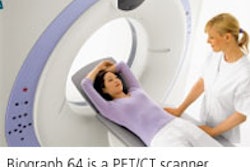Dear AuntMinnie Member,
One of the toughest tasks physicians face is finding the primary tumor in a patient who presents with secondary tumors and an unknown primary malignancy. Fortunately, the added diagnostic information available with PET/CT can help imaging specialists crack this tough nut.
A pair of presentations from last week's RSNA show in Chicago clarifies some of the benefits PET/CT can bring in finding unknown primary lesions, according to an article by staff writer Jonathan S. Batchelor in our Molecular Imaging Digital Community.
In the first presentation, researchers from Germany found that the anatomical information available from the CT component of PET/CT enabled them to more precisely localize FDG uptake found via the PET component.
In the second presentation, Italian researchers used FDG-based PET/CT to find occult primary cancer in patients with biopsy-proven secondary lesions. They discovered that PET/CT was able to find nearly half the occult tumors in their study population and, like the German researchers, believed that the anatomical data provided by the CT component was a key reason for the improved results.
Read all about both studies by clicking here, or visit our Molecular Imaging Digital Community at molecular.auntminnie.com.
For a complete review of our daily coverage from medical imaging's showcase conference, just visit our RADCast@RSNA special section, at radcast.auntminnie.com.




















